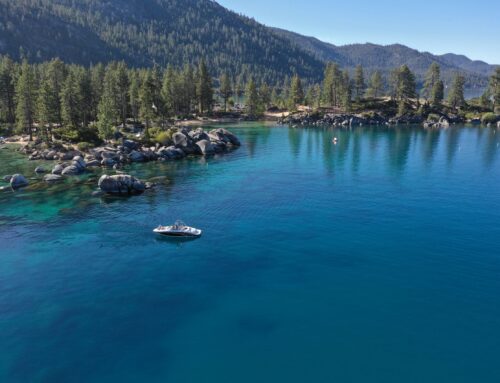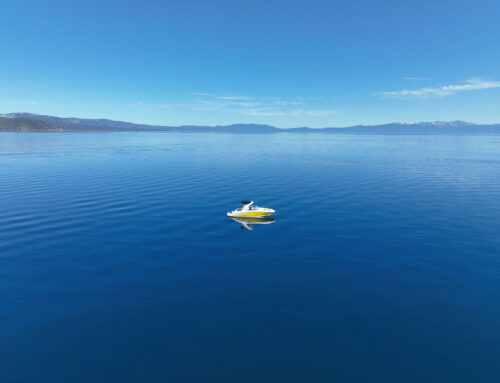Have you ever been to Lake Tahoe and just stopped in awe of its breathtaking blue color? I mean, seriously, it’s like staring into a giant sapphire gemstone. But have you ever wondered what makes the lake’s water so blue? Well, my curious friend, let me take you on a journey through the science behind Lake Tahoe’s stunning blue color.
First things first, let’s talk about the basics. Lake Tahoe is a large freshwater lake located in the Sierra Nevada mountains on the border of California and Nevada. It’s the largest alpine lake in North America and one of the clearest lakes in the world. The lake’s crystal-clear water is what allows sunlight to penetrate deep into the lake, creating a unique environment for aquatic life and, of course, a stunning blue color.
But it’s not just the clarity of the water that creates this beautiful blue hue. The color of the lake is also influenced by the way that light interacts with the water molecules. Without getting too technical, let me break it down for you in simple terms.
Sunlight is made up of different colors, each with its own wavelength. When sunlight hits the water, some of the colors are absorbed, while others are scattered. The color blue has a shorter wavelength, which means it’s more likely to scatter than other colors like red or green. As a result, the blue light is scattered throughout the water, making it more visible to our eyes and creating that stunning blue color we all love.
But there’s more to it than just that. The lake’s blue color also changes depending on the time of day and the angle of the sun. In the morning and evening, when the sun is lower on the horizon, the light has to pass through more of the earth’s atmosphere, which scatters the light even more and gives the lake a deeper, darker blue color. During the middle of the day, when the sun is directly overhead, the light has to pass through less atmosphere, creating a lighter, brighter blue color.
It’s not just the physics of light that influence the lake’s color either. The surrounding landscape and environment also play a role. The Sierra Nevada mountains that surround the lake are made up of granite, which is naturally a grayish-white color. This creates a stunning contrast against the blue of the lake, making it even more vibrant and eye-catching.
The science behind Lake Tahoe’s stunning blue color is a combination of its crystal-clear water, the way light interacts with the water molecules, and the surrounding landscape. It’s truly a natural wonder that we are lucky enough to experience firsthand. So, next time you find yourself gazing out at the lake’s beauty, take a moment to appreciate the science behind it all.





